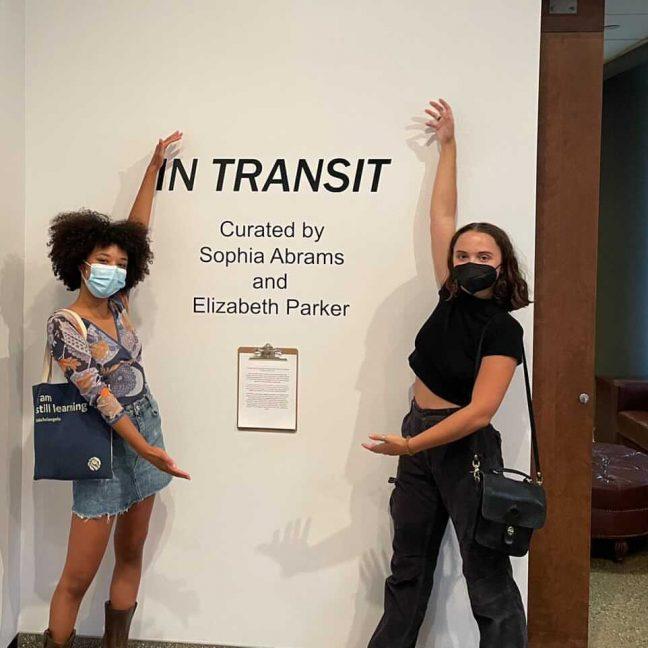University of Wisconsin students Elizabeth Parker and Sophia Abrams curated an art exhibit depicting how young people use art to process their grief during the COVID-19 pandemic in “In Transit.”
“There is art all around us and we are all using it … you do use art … to process your feelings, where you’re at physically or spiritually or mentally,” Parker said.
Parker is currently a fifth-year student studying English linguistics and economics, with a certificate in digital cinema production. Abrams is a senior studying journalism and Afro-American studies, with a certificate in art history. Their joint exhibit was displayed at Union South from Aug. 10 to Sept. 10.
The story of “In Transit” began around January 2021. Inspired by themes from the mumblecore film genre, Abrams and Parker met over zoom to discuss ideas for a film about a young artist, navigating through their feelings and the pandemic.
Mumblecore was a style of film from the early 2000s, where a group of young folks in New York wanted to make movies without outside funding, using equipment such as DSLR cameras and DIY techniques to achieve their ideas.
Likewise, Abrams said that Parker and herself were driven to express themselves because “we’re creative, we’ve got ideas … obviously we’re limited because of Covid … but we should still try to create something. Even if we don’t have all the resources that we need to do it.”
Parker and Abrams found the DIY, gritty, imperfect aesthetic of mumblecore appealing, and the type of energy they wanted for their show — a raw look at collaboration with different artists and their different mediums.
Parker and Abrams contacted the Wisconsin Union Directorate Art Committee, hearing back from them a couple of months later for an exhibition in the month of August. During this quick turnaround period, Parker and Abrams contacted artists, reached out to public relations and received submissions from various artists.
An interesting feature about this exhibit was that though a lot of the art exhibited was from local artists, people who do not identify as “artists”, or for whom art is not considered their occupation, also contributed a portion of the artwork displayed.
Abrams said that was a part both she and Parker were curious about because art is a universally available way to express oneself. Parker and Abrams said art is a major tool that can be used for healing and can be accessible to anyone regardless of background through this exhibit.
Abrams pointed out that while there were many implicit themes present within the exhibit and many directions that can be used to interpret the art, another important message was that many identities can coexist. And those ideas come together and interact, as well as shape one’s life in many different ways.
Parker and Abrams are planning a second exhibit surrounding this theme as society is beginning to see some signs of normalcy. Parker and Abrams want to capture how humans never stop changing or transitioning.
Their second exhibit will also be a reflection of the time people spent alone during the pandemic and the transition back to normalcy.


